by Mike Gulett –
There was a time when automobiles didn’t just transport us, they announced us. And nothing symbolized that more than the hood ornament. These graceful mascots were more than functional radiator caps or branding devices; they were miniature sculptures, a union of industrial design and art. They were, in some cases, the most beautiful detail on the car.
From the elegance of the Rolls-Royce Spirit of Ecstasy to the wind-swept forms of Art Deco Packards, the hood ornament tells the story of an era when even the smallest details were crafted with artistic ambition.
During Monterey Car Week I always look for cool hood ornaments as much as I look for cars. I also tend to take photos of cool ornaments.
Utility Meets Identity
In the early days of motoring, external radiator caps made it easy to check and refill engine coolant. But rather than leave the radiator cap as a utilitarian tool, coachbuilders and carmakers began embellishing it. Early hood ornaments were often thermometer-equipped—combining form and function.
Soon, luxury manufacturers commissioned artists and metal workers to create custom mascots, setting the tone for what became a golden era of automotive ornamentation in the 1920s and ’30s.
The Golden Age: 1920s–1940s
This period marked the height of hood ornament design. Styles varied from the figurative to the fantastical:
-
Rolls-Royce’s Spirit of Ecstasy, created by sculptor Charles Sykes in 1911, remains perhaps the most well known mascot ever made—an elegant woman leaning forward, robes flowing behind like wings. It is the essence of grace and motion.
-
Packard offered a leaping pelican (or maybe a cormorant) with wings outstretched, evoking majesty and flight.
-
Pontiac paid homage to Native American imagery with stylized tribal heads, often illuminated with amber plastic in the 1930s—a glowing symbol of power and speed.
-
Lincoln Greyhounds, modeled after racing dogs in mid-stride, became a signature of Art Deco streamlining.
-
Cadillac, Buick, and Chrysler also fielded beautiful mascots—goddesses, winged figures, and chrome forms that seemed to channel the spirit of aviation and speed.
Some of the finest examples were not produced by the manufacturers at all. Companies like Lalique in France, famous for its fine glasswork, offered crystal mascots shaped like eagles, nudes, foxes, and horses. These were favored by wealthy European clients who could afford to treat their car as an art canvas.
Symbolism and Status
The hood ornament became a status symbol, a unique artistic expression that said as much about the owner as the car. They were more than just decoration—they were badges of identity. They also needed to be protected from theft.
Collectors and connoisseurs often ordered custom pieces to reflect their tastes, hobbies, or family crests. Others selected ornaments based on mythology, astrology, or personal symbolism. In this way, the hood ornament functioned almost like jewelry—a wearable expression of personality, placed where all could see.
Regulation and Minimalism
By the 1950s and ’60s, hood ornaments began to shrink, although the leaping cat on a Jaguar was still with us. Streamlining, changing tastes, and growing safety concerns played a role. Pedestrian safety regulations—especially in Europe—eventually sounded the death knell for tall, rigid ornaments.
By the 1980s, most manufacturers had removed or significantly minimized hood ornaments, relegating them to badges or flat emblems on the hood. Rolls-Royce adapted by engineering a retractable version of the Spirit of Ecstasy that hides itself if tampered with or during parking. The Mercedes-Benz logo hood ornament would fold down if hit by an errant body.
Mascots as Miniature Sculpture
Today, hood ornaments are collector items. Prewar examples, especially Lalique glass mascots or one-off pieces by famed metal artists, command high prices at auction. Museums and private collections often display them as standalone works of art.
They are also enjoying a revival among enthusiasts of period-correct restorations, concours-level presentations, and automotive art collectors. Reproductions and originals are traded in a subculture of automobilia collecting.
Though largely absent from modern cars, the legacy of the hood ornament lives on in the hearts and minds of collectors, restorers, and design enthusiasts.
They remind us that at one time, even a radiator cap could be a masterpiece.
Let us know what you think in the Comments.
Research, some text and some images by ChatGPT 40.
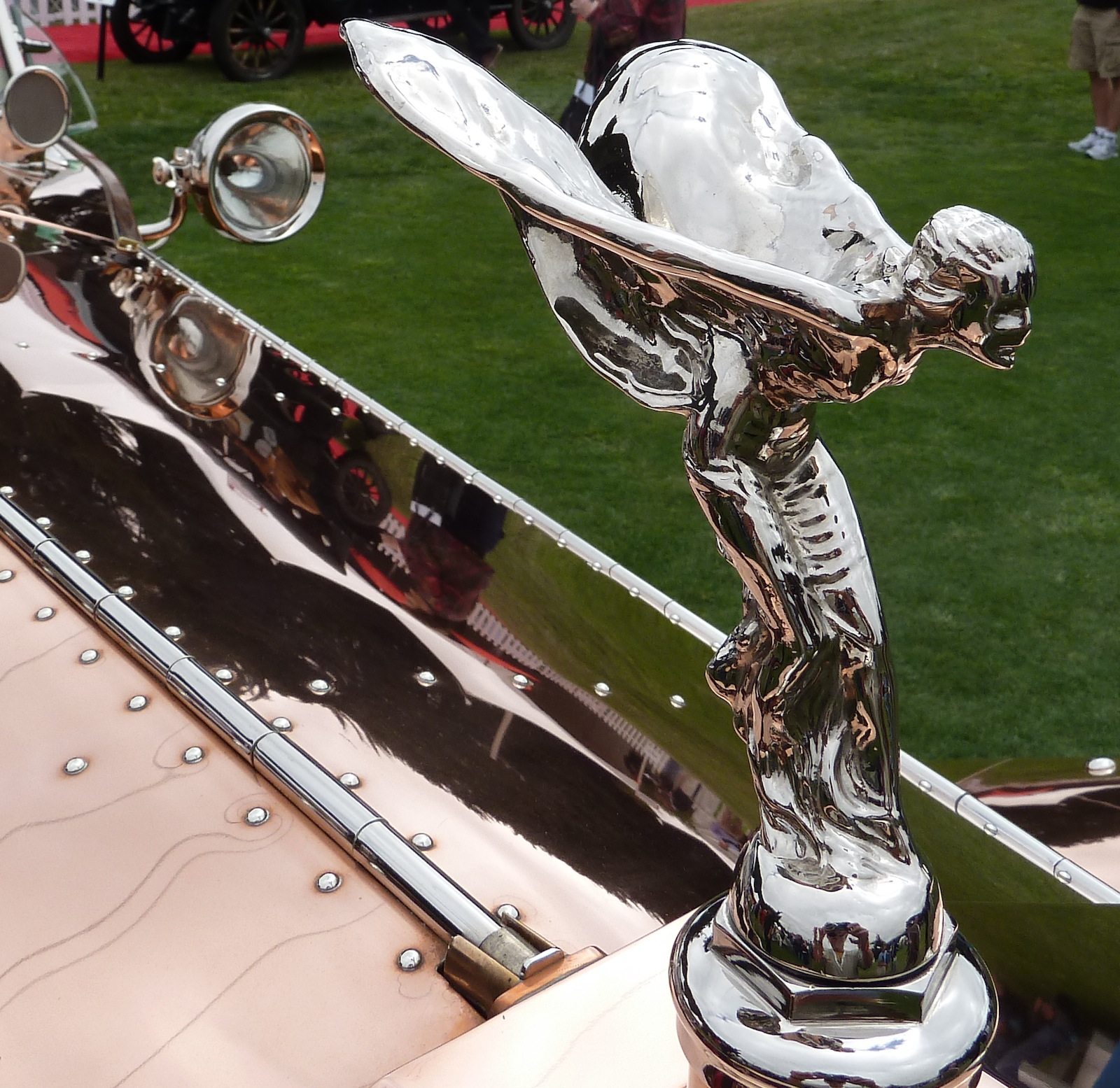
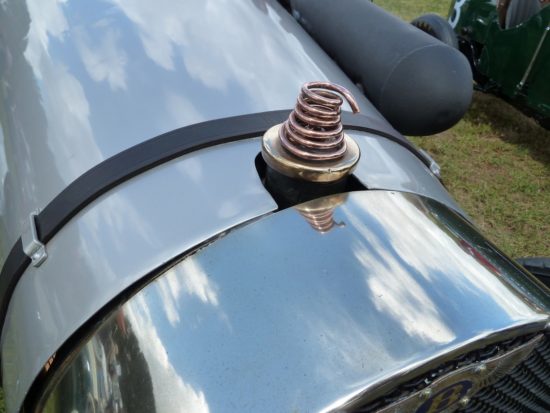
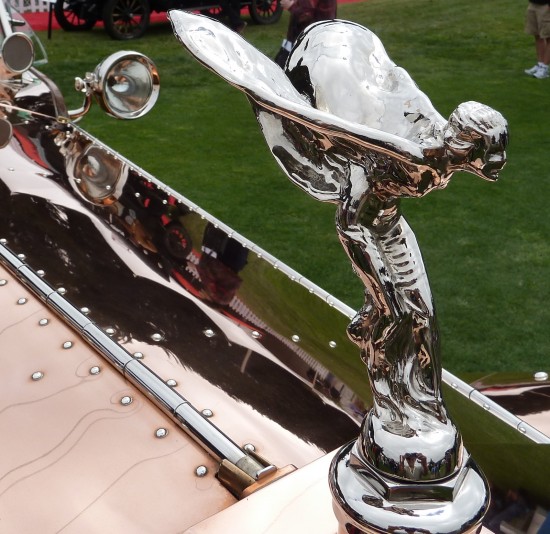
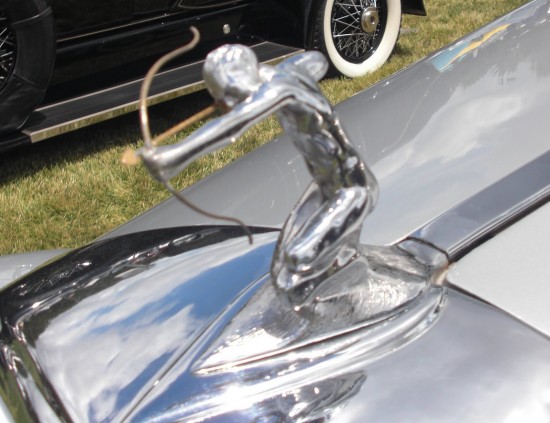
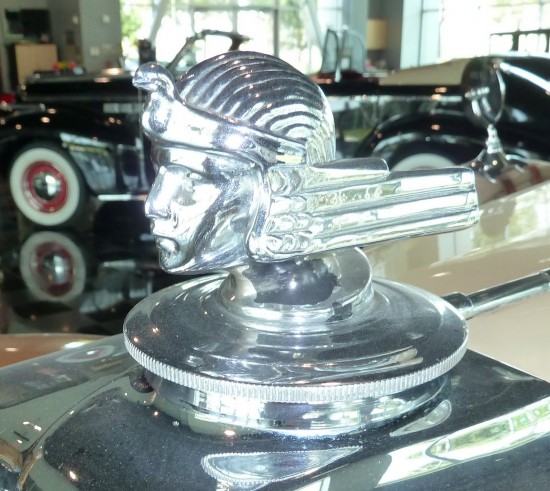

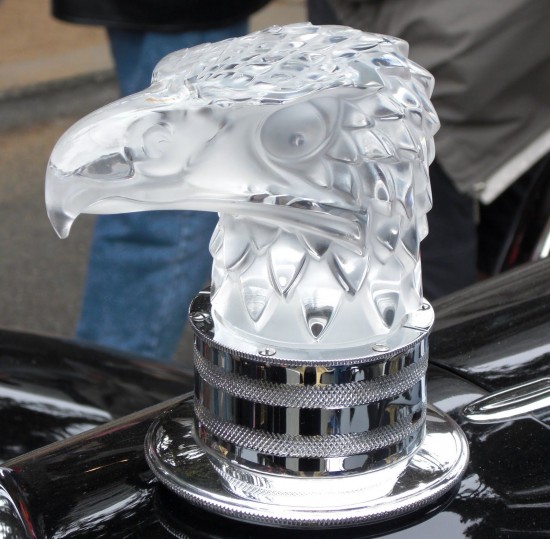
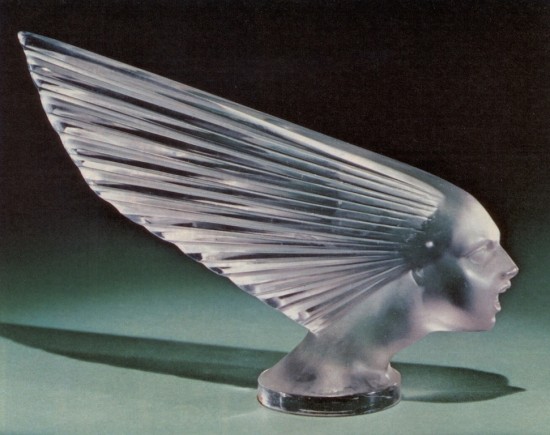
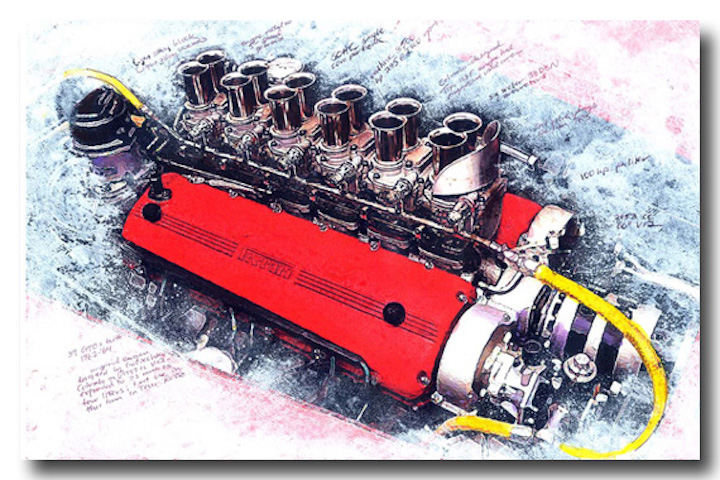

Although a few other types appeared on Duesenbergs, the Duesenbird is probably the most recongized
Great article! They represent so many expressions and commentaries of personalizations, symbolism, projections, and even humor.
At the French National Motor Museum in Mulhouse (every veteran, vintage, classic, racing, and Bugatti enthusiast should have it on their bucket list!), there is a wall of hood ornaments ranging from the production to the artistic to the ridiculous and to the sublime.
One of my favorites is the Rampant Lion seen on Franklins.
Mike,
Great photo, thank you.
Great subject!
Thanks
Excellent article Mike. i have always admired these radiator mascots. Incredible art!
The Poniac Chiefton is beautiful. It is sad that GM shut down Pontiac. Great pictures and article.
“Pedestrian safety regulations—especially in Europe—eventually sounded the death knell for tall, rigid ornaments.”
Pedestrian safety regulations also sounded the death knell for retractable headlamps.
Glenn in Brooklyn, NY.